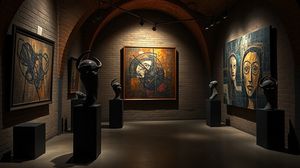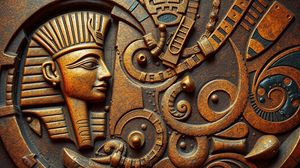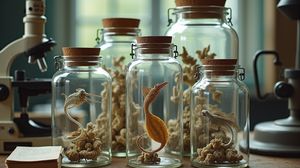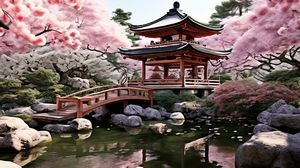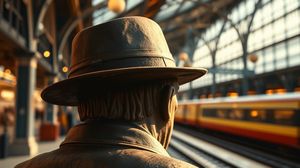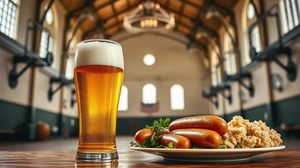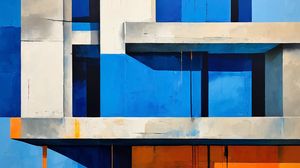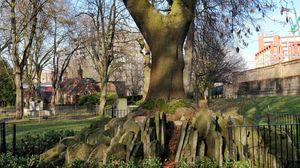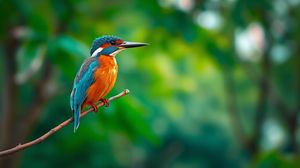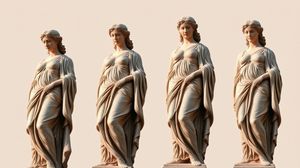
St Pancras New Church is one of the most striking early 19th-century neoclassical buildings in London, situated prominently on Euston Road. The church, designed by the architectural duo William and Henry William Inwood, showcases a captivating blend of Greek Revival and classical architecture, characteristic of that era.
The Caryatids of St Pancras New Church are perhaps the most intriguing feature of this iconic building. These sculpted female figures, serving as architectural supports, are inspired by the Erechtheion on the Acropolis of Athens. The caryatids here famously support the church's western entrance porch, adding an air of ancient Greek elegance to London's streetscape.
Uniquely, the caryatids were crafted by Richard Westmacott, a preeminent British sculptor of the 19th century, known for his work on the iconic pediment of the British Museum. Their creation involved skilled craftsmanship to ensure the lifelike detail and integrity of these important structural elements.
An interesting aspect of the caryatids is their hollow structure. Each one is essentially a hollow pillar, allowing rain water to travel down through them, as they cleverly double as rainwater pipes, merging function with form.
The caryatids are made from Coade stone, a type of ceramic stoneware known for its durability and weather-resistant properties. This artificial stone was a popular choice in the 18th and 19th centuries for creating ornate architectural details, contributing to the longevity and preservation of the caryatids' fine details.
St Pancras New Church and its stunning caryatids have been Grade I listed, highlighting their significant historical and architectural importance. This designation helps preserve the church's unique features for future generations to appreciate.

Making the Most of Your Visit:
Take a close look at the craftsmanship of the caryatids when you visit. It's fascinating to see the details that Richard Westmacott incorporated into these figures. If you notice the surface, the Coade stone has preserved the intricate designs extremely well.
See if you can spot how the caryatids function as rainwater pipes. It's interesting to watch how architectural beauty is cleverly combined with practicality, so if it's raining, you might witness rainwater channeling through them.
Visit during a quiet time of day, perhaps early morning or late afternoon, for the best chance to appreciate the caryatids and the church facade without the hustle and bustle of Euston Road distracting you.
Consider bringing along a good camera or smartphone to capture the details of the caryatids. These figures are quite photogenic, especially with the backdrop of the neoclassical architecture, and the lighting at different times of the day can offer unique photographic opportunities.
If you have the time, stroll around the building. The entire church is a neoclassical gem, and while the caryatids are a highlight, other architectural details around the structure are worth a look too, offering a sense of the era's artistic and architectural inclinations.

Visiting Times & Costs:
St Pancras New Church, including the Caryatids, is open to the public. Generally, the best time to visit is during daylight hours for sufficient natural lighting and to fully appreciate the architectural features.
There is no entrance fee to view the exterior of the church and its architectural features such as the Caryatids. Please note that interior access may be restricted to certain hours or events, and it's typically free of charge when available, but donations for the church are welcome.
The site is accessible to the public, but due to the historical nature of the building, some accessibility limitations might exist, such as uneven surfaces or steps without modern ramps. Visitors requiring additional assistance are advised to check ahead for specific accessibility features.

Address & Map:

Nearby:
